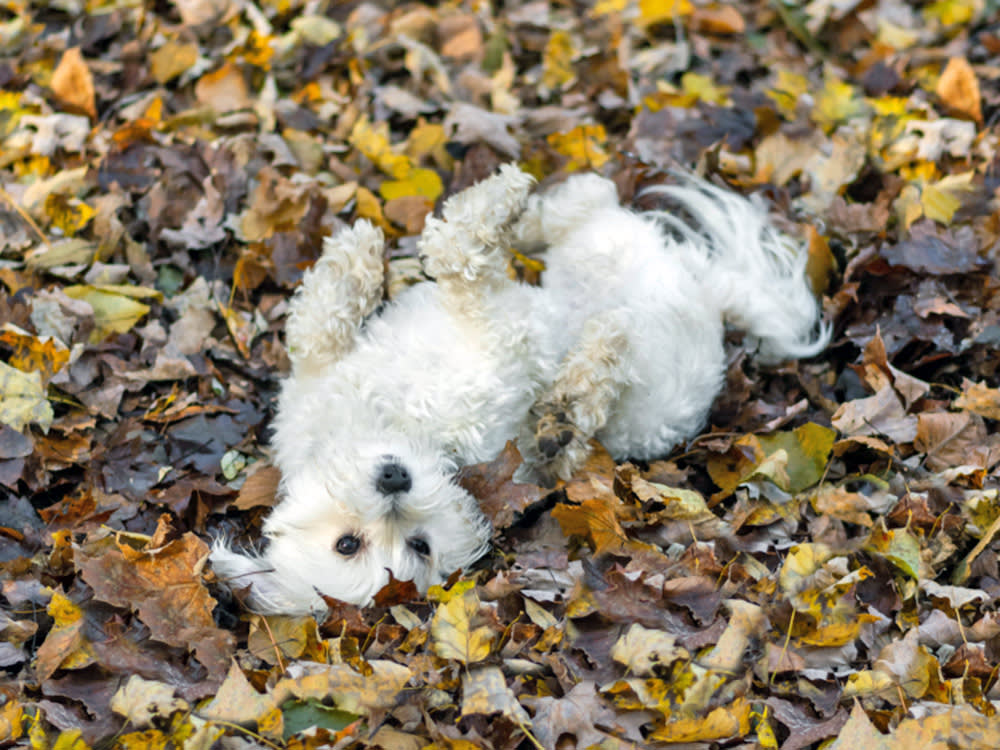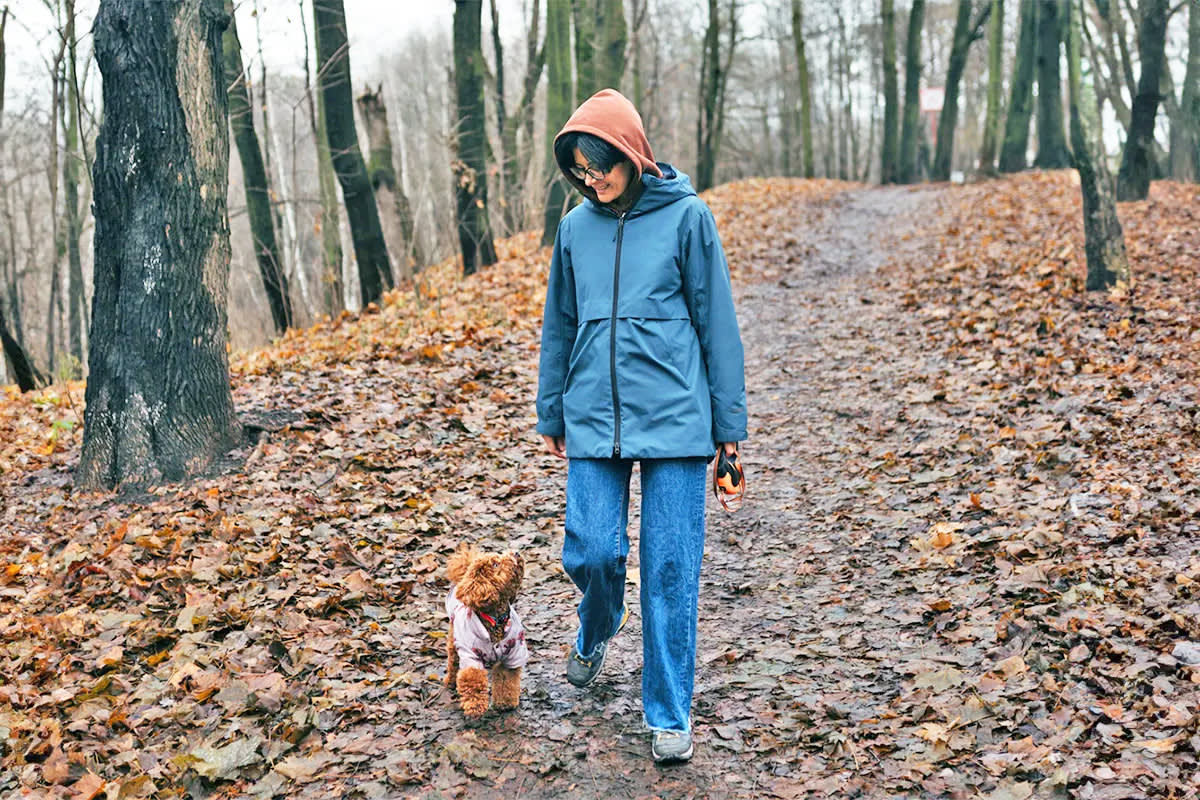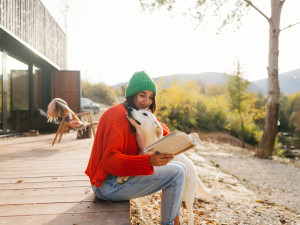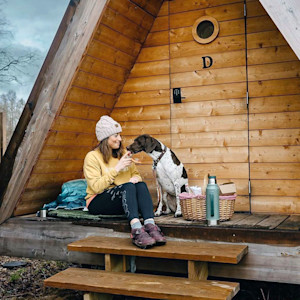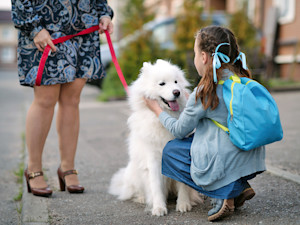The Hidden Dangers of Letting Your Dog Play in Fall Leaves
Not to be a total killjoy, but you should be aware of the risks.
The crunchy sound of leaves really gets some dogs going. My dog, for one, loves when I kick up clusters of leaves on the sidewalk. He goes into “play mode,” biting at the leaves, crouching low, and running in short bursts. Pups simply love those fun noisemakers that fall from the trees. So, when their mom or dad rakes them into a big pile, all bets are off.
They have a look of pure bliss on their face. Tongue out, not a care in the world, run, leap, crunch, fun! Let’s do it again!
Snap a pic of your pup’s teeth, and GREENIES™ will help you spot potential signs of oral health issues.
“Outdoor activity and novel experiences are important for dogs to be healthy and happy, so doing things like jumping in leaves can present a fun and enriching experience for them,” says veterinarian Dr. Amy Foxopens in new tab, a small animal expert in New York City.
This seems like a positive, carefree activity for a dog, but pet parents should still be aware of the potential hazards in leaf piles (particularly wet ones) and take action accordingly. Veterinarians warn of the parasites, other animals, needles or other sharp objects, mold, and bacteria that could be hidden among the leaves.
How much do you spend on your pet per year?
When letting our dogs play in leaf piles, it’s best to avoid random ones of unknown origin. Any old leaf pile on the side of the road or in a park might not be ideal. Any leaves you find should be from a private, well-maintained yard, ideally recently raked by you, to be sure it’s free of debris and sharp objects, says veterinarian Dr. Jessica Apted, regional medical director at Sploot Veterinary Careopens in new tab.
If your dog absolutely has to crunch around in the fall leaves, Dr. Fox says it’s best to find a newly raked, dry pile in your own yard. This way, it has had less of a chance to sit around and collect nefarious items.
The biggest concern? Bugs.
Even if you let your pup enjoy a dry leaf pile you have recently raked up yourself, it’s hard to see if certain bugs are hiding within them. “Depending on where pet parents live, they should be mindful of the types of insects and other critters that may be hiding in large leaf piles,” Dr. Fox says.
Fleas, ticks, and mosquitoes easily lurk in a leaf pile, presenting a great opportunity to latch onto a dog’s coat, bite, and do what parasites do. “Veterinarians see lots of cases of disease caused by mosquitoes and ticks,” Dr. Fox says.
Ticks are present in the continental United States, according to the U.S. Centers for Disease Control and Preventionopens in new tab (CDC), and carry diseases, such as lyme, Rocky Mountain spotted fever, ehrlichiosis, anaplasmosis, babesiosis, and hepatozoonosis. They’re present well beyond summer — about April to November, depending on where you’re located — in leaves, high grasses, or vegetation.
Mosquitoes often carry heartworm disease, causing critical organ damage or even death. They also carry West Nile virus and Eastern equine encephalitis, which both cause neurological issues in dogs. Inspecting for these parasites and keeping year-round flea, tick, and heartworm preventatives up to date will help protect our furry friends, no matter the season.
Beware of encounters with other animals.
Leaf piles provide excellent cover for mice and rats, which can carry a variety of diseases. Rodent urine can spread a bacterial infection called leptospirosis, found in soil or water and further spread by other wildlife. Dogs encounter the bacteria when drinking in puddles or even through skin contact.Thankfully, leptospirosis can be prevented with routine vaccinations, Dr. Fox says.
She adds that veterinarians also see numerous snake bite cases every year, either due to venom or wounds. Snakes can lurk in leaf piles and react when their peace is disturbed. “It’s also important to consult a local vet about other risks in the area,” she adds.
Fall foliage can mean fall allergies.
Allergies from pollen also affect some dogs during the autumn season, so jumping into a concentrated source of these allergens could lead to sneezing or skin irritation.
Moldy leaves can also irritate dogs’ skin, and burrs can get entangled in their coat, leading to tangling and infection, Dr. Apted says. To avoid mold growth on leaves, wait to rake until they’ve had some exposure to sunlight and are dry. Plus, if leaf piles are from oak trees, pet parents should watch out for acorns, which can be toxic if ingested, Dr. Apted says.
Give them a full inspection post-pile jump.
After a romp, pet parents should inspect their dog’s fur and paws for insects, burrs, or small cuts, Dr. Apted says. Give them a quick brush to help remove any leaf debris or potential irritants. It may also be necessary to bathe the dog if they have a lot of leaf litter, mud, or other materials stuck to their paws and coat.
“It’s not always possible to know exactly when or where dogs pick up certain infections, but it is important to minimize risks and to do as much as possible to protect our pets through preventative care like vaccines and monthly flea/tick/heartworm medications,” Dr. Fox says.
